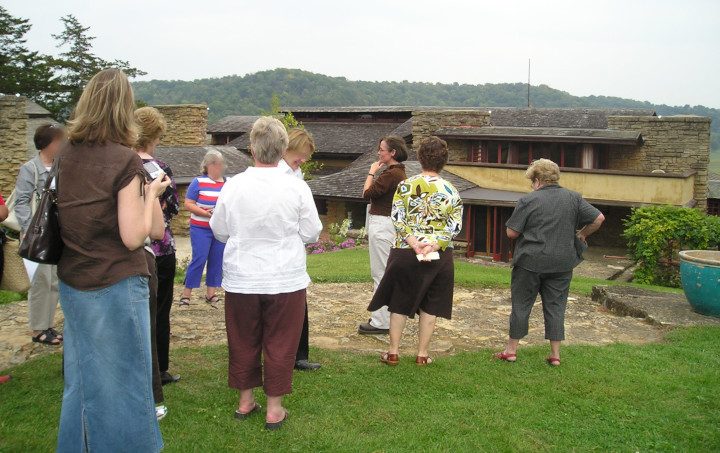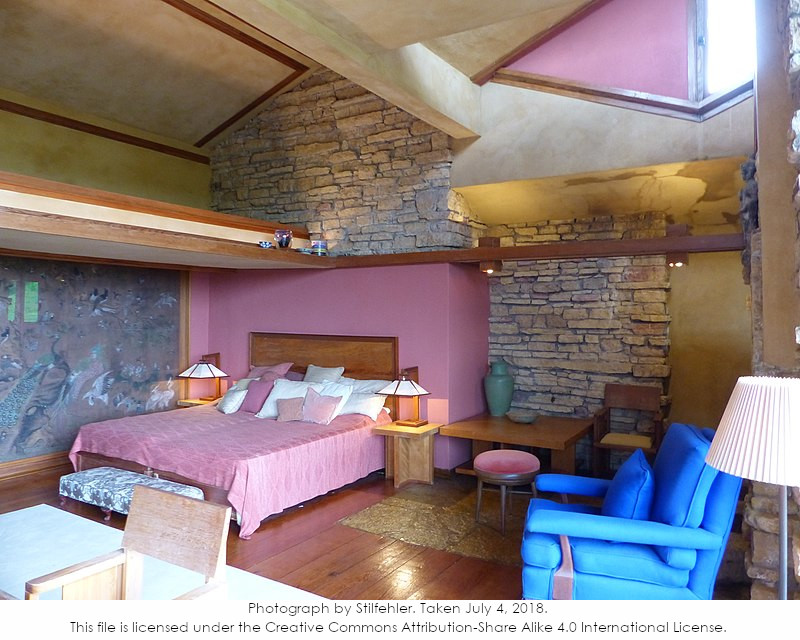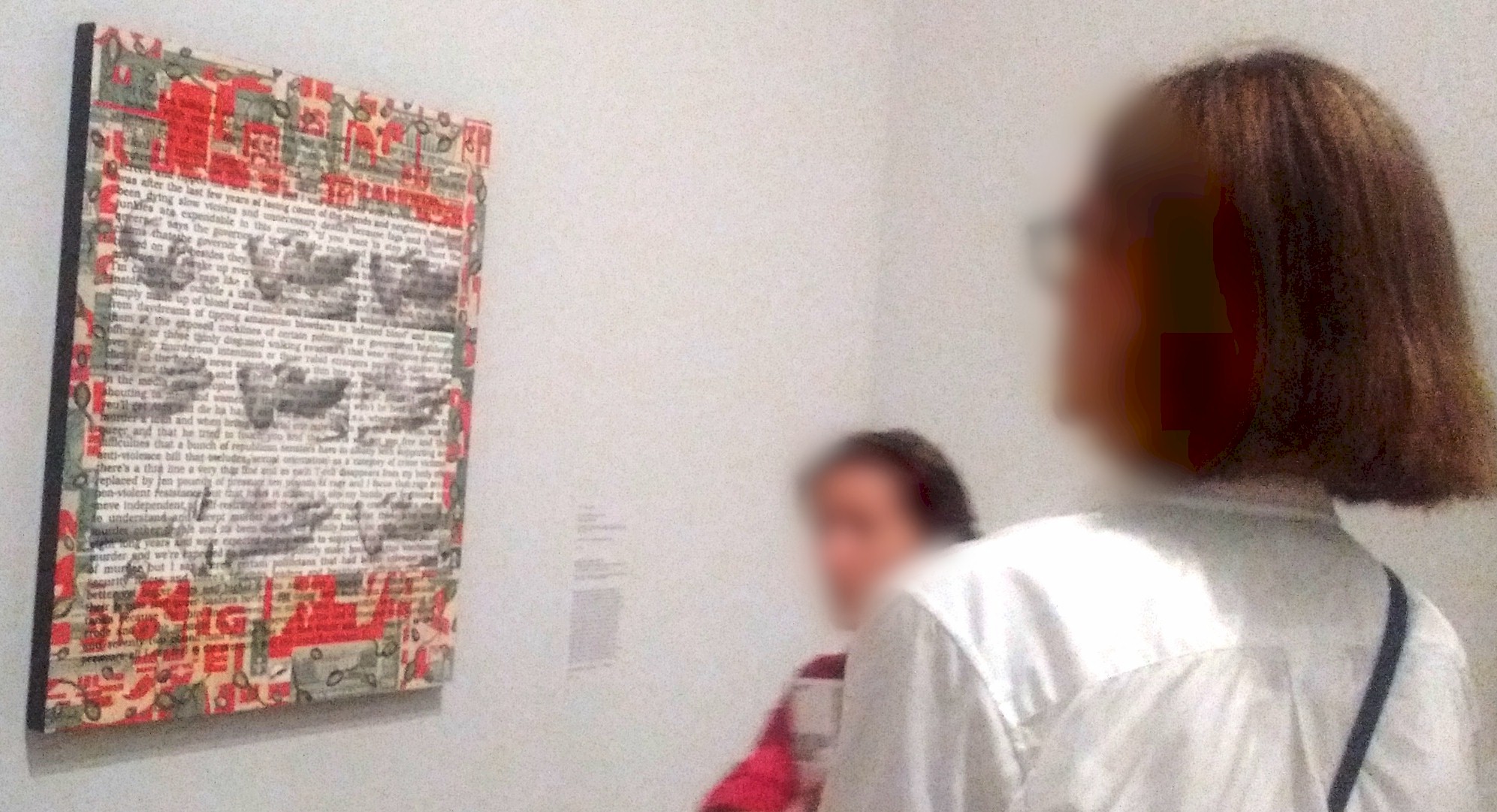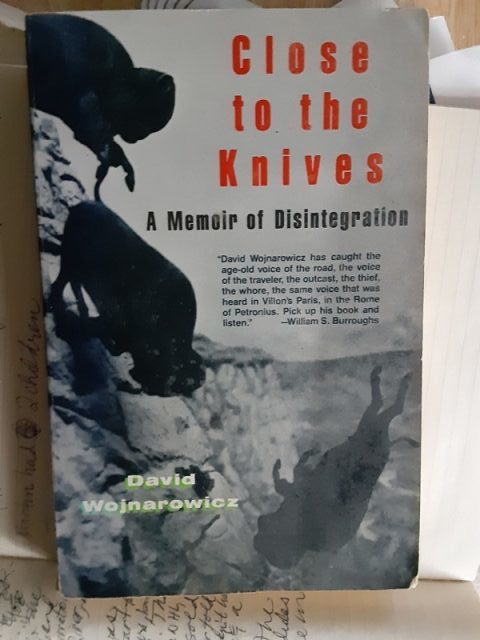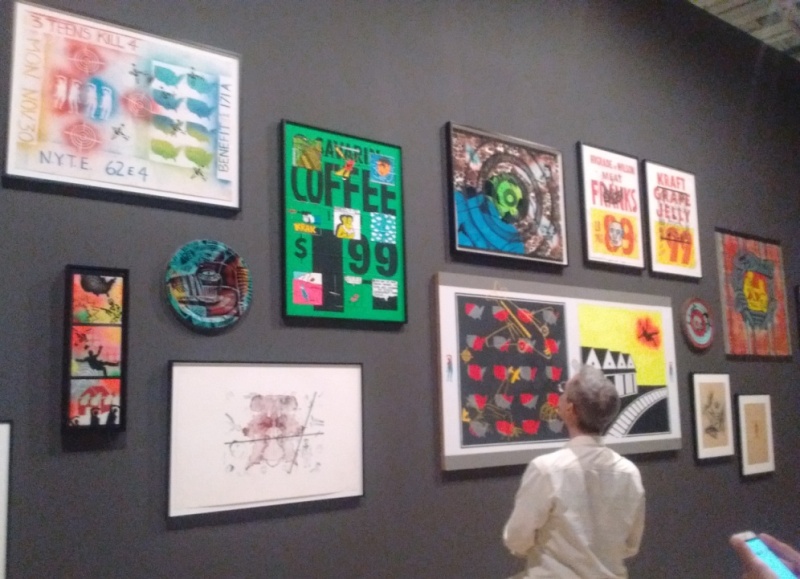My post today isn’t going to be about taking too many Taliesin tours, but about giving too many of them. That’s because, you see, we’re coming into late September and I realized that the Taliesin tour guides right now may start to feel like what I wrote years ago
in my unpublished memoir, “What Time Does the 1:30 Tour Leave?”
I started giving tours in 1994 while I was in school.1 But after this, I worked full-time in the tour program during the 1995-2002 seasons.
During that time, Taliesin Preservation mostly had:
- The 1-hour Hillside Studio and Theater tour,2
- The 2-hour, 2-mile Walking Tour,
- The House tour,
Now called the “In-Depth” House Tour. Here’s a link to a description from 2021.
- And the Estate tour
a.k.a, the 4-hour tour.
Due to the lack of heat inside Taliesin, we gave interior tours at that time only from May-October.
Therefore, we were always happy when the tour season started, because
We got to
see the buildings again! That really was like seeing old friends.
And then the season really got rolling and veteran guides mostly gave House and Estate tours.
This heavy rotation of veteran guides giving tours that went into the House would go
probably STILL DO
from late June through our peak season (ending on Labor Day).
Then the kids went back to college and the tour numbers dropped
(spiking in October for “leaf season”).
This heavy House tour rotation
from June through the beginning of September could start to do funny things to the mind.
In fact,
I usually succumbed to what I call:
“tour guide’s disease”.
That is: on tour, I’d say whatever was in my head.
I’m not talking about giving my shopping list or commenting about a sweater any of my guests was wearing
I mean that,
The genius of the man and the beauty of the spaces faded

And instead, I found myself musing out loud about the bunny rabbit that had shown up on the tour; or,
- a small change in the stone that I’d never noticed,
- an answer to a question someone had asked me earlier that day,
- and talking about Sherpa, who was a Taliesin Kitty for years.
Then in one particular year, the tour scheduler
No, not you, Bob
basically xeroxed the tour schedules.
That is,
she gave us each the same tour schedule week after week.
In fact, one of the Taliesin tour guides gave only House tours through July and August. In other words, all this guide gave was: two, two-hour House tours, five days a week, for eight solid weeks.
I saw the effect this schedule had on her by the end of that summer.
Because
as I was also on this “xeroxed” schedule, I gave House tours two days a week; one Estate tour; and for the other two days I was a Taliesin House Steward.
Our collective experience was like walking up to a mirror and saying your name over and over until it becomes an inexpressible concept.
Sometimes, this guide would be talking about something while looking in a completely different direction. Because OF COURSE she knew exactly where that table, piano, Japanese screen, or bed was in each of the rooms.
Also,
sometimes she walked past me while I held the door open for her and visitors to walk into Taliesin’s Guest Bedroom:
and she’d whisper “God, get me off this tour” to me as she walked over the threshold.
Now, my suggestion for guides (and myself) in this case
giving the same tour over and over
is to “vary your tours”: find some aspect about Wright, or his ideas or buildings to explore.
which is why what I talked about on tours was sometimes completely different in September than what it had been in May.
However, that summer was special, too.
Because of the weather.
It was warm.
Not dangerously hot most of the time, but through the bulk of the summer, the weather seemed a consistent 85F [29C] or so.
Sometimes it was warmer, and sometimes it was cooler, but the rest of the time, it was 85F.
And dry.
So, every day was hot.
Cloudless.
Hot.
Cloudless.
Hot, perhaps a little humid, cloudless.
all the while we were surrounded by dying crops and brown grass.
This repetition made us all a little loopy.
And for me? I was giving so many House/Estate tours and listening to so many House/Estate tour guides in such heat that my internal censor had begun to malfunction.
I do remember
when this problem hit home.
I was giving a House tour and was on the stone hearth in front of the Living Room fireplace (like you see in the photo from 1955, below):

Call Number: photCL MLP 1266
A fireplace, inglenook and flagstone floor seen in my post, “1940s Change in Taliesin’s Living Room“
I had either just received a question regarding the furniture in the room,
or had just come to that subject in my tour narrative.
Do you know that at Taliesin, there is said to be only one piece of furniture from the interior that survived the 1914 fire? It’s a bench that is, today, behind the dining table in the room and you can see it in the photo below:
The bench is one of two on either side of the table in the photograph above.
While I was speaking, I voiced the thought I’d previously had about that bench:
“that doesn’t make a lot of sense to me. If a guy is chasing you through a burning building with an ax, are you going to think, ‘Oh, yeah, got to save this bench over here.’”?
I was speaking these words and
a voice in my head off to the side was asking me:
“Keiran. Dear. What the f**k are you saying?”
While my lapse in judgement caused me to rethink my phrasing, several days after my comment, the heat broke in two of the most ferocious thunderstorms I had ever personally witnessed. Two large cloud bursts each lasting an hour and a half brought 7 inches of rain.
In addition, the manager finally scheduled all of us for more Hillside and Walking tours.
So that broke the spell.
Published September 15, 2024
Someone from Taliesin Preservation took the photograph at the top of this post. It shows me with a group while I was giving a tour. I’m standing in the middle in white pants. You can also see this image in my post, “Tour Guides and Trust“.
Note:
1. you can read about the guy I was writing my Master’s thesis on at that time, here.
2. formerly called the “Hillside Home School Tour”, but we changed the name by the mid-1990s after some people got very angry when they found out they weren’t going to the Taliesin residence.

